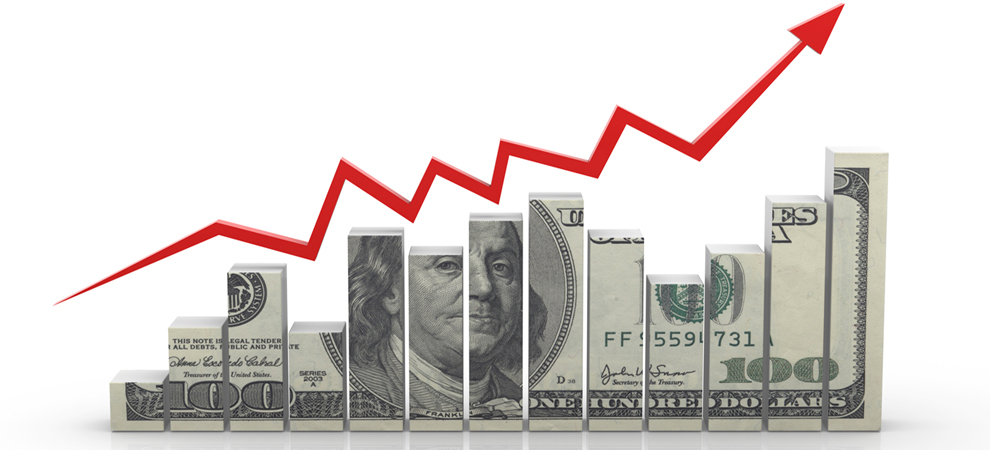The WPJ
THE WORLD PROPERTY JOURNALReal Estate Facts Not Fiction
Residential Real Estate News

65 Percent of U.S. Metros Enjoyed Double-digit Annual Price Gains in Q3
Residential News » Washington D.C. Edition | By Monsef Rachid | November 13, 2020 8:12 AM ET
According to NAR's latest quarterly housing report, every U.S. metro area tracked by the National Association of Realtors during the third quarter of 2020 saw home prices increase from a year ago.
Due in large part to record-low mortgage rates and depleted nationwide housing inventory, median single-family home prices grew year-over-year in all 181 metropolitan statistical areas tracked by NAR, as every measured market showed sales price gains.

Lawrence Yun
Sixty-five percent of metros - 117 areas out of 181 - witnessed double-digit price growth from one year ago. In comparison, only 15 metro areas recorded double-digit increases in 2020's second quarter. The biggest gainers in the third quarter were Bridgeport, Conn. (27.3%); Crestview, Fla. (27.1%); Pittsfield, Mass. (26.9%); Kingston, N.Y. (21.5%); Atlantic City, N.J. (21.5%); Boise, Idaho (20.6%); Wilmington, N.C. (20.6%); Barnstable, Mass. (19.4%); Memphis, Tenn. (19.1%); and Youngstown, Ohio (19.1%).
The nation's median existing single-family home price climbed 12.0% on a year-over-year basis, to $313,500. All four major regions saw double-digit year-over-year price gains, led by the West (13.7%), but followed closely by the Northeast (13.3%), the South (11.4%), and the Midwest (11.1%). At this rate, home prices were growing four times as fast as median family income, which was 2.9%.
"In light of the pandemic, prices jumped in a number of metros that contain larger properties and open space - where families could find extra rooms, including areas for an at-home office," said Yun.
Eight of America's 10 most expensive metro areas are located in the West region, with the remaining two in the East region. Those include San Jose, Calif. ($1.40 million); San Francisco, Calif. ($1.125 million); Anaheim, Calif. ($910,000); Urban Honolulu, Hawaii ($866,200); San Diego, Calif. ($729,000); Los Angeles, Calif. ($708,900); Boulder, Colo. ($673,400); Seattle, Wash. ($617,700); Bridgeport, Conn. ($591,400); and Boston, Mass. ($588,100).
At the end of the third quarter, 1.47 million existing homes were available for sale, 19.2% lower than total inventory at the end of 2019's third quarter. As of September 2020, housing inventory totals were equivalent to 2.7 months at the current sales pace.
As Yun noted, rapidly rising prices take a toll on home affordability. With higher home prices, the monthly mortgage payment on a typical existing single-family home - one that is financed with a 30-year fixed-rate mortgage and 20% down payment - rose to $1,059 in the third quarter. This is an increase from the second quarter ($1,019) and from 2019's third quarter numbers ($1,032).
At the median U.S. family income of $81,477, mortgage payments accounted for 15.6% of income in the third quarter, an increase from the second quarter share of 14.8% but unchanged from the share seen one year ago. The effective 30-year fixed mortgage rate averaged 3.01% in the third quarter of 2020, down from both the second quarter of 2020 (3.29%) and from one year ago (3.71%).
With home prices continuing to rise, families needed roughly $50,819 in annual income to comfortably afford a mortgage on a typical existing single-family home, up from $48,912 in the second quarter and from $49,536 this time last year. A 30-year fixed-rate, 20% down payment mortgage is considered affordable if the mortgage payment accounts for no more than 25% of a family's income. A home purchase was affordable because the median family income was $81,477.
"As home prices increase both too quickly and too significantly, first-time buyers will increasingly face difficulty in coming up with a down payment," said Yun. "Transforming raw land into developable lots and new supply are clearly needed to help tame the home price growth."
In 125 of the 181 metro areas, a family needed less than $50,000 to afford a home. However, in eight metro areas, a family needed more than $100,000: San-Jose-Sunnyvale, Calif. ($228,862); San Francisco, Calif. ($183,907); Anaheim, Calif. ($148,760); Urban Honolulu, Hawaii ($141,600); San Diego, Calif. ($119,172); Los Angeles, Calif. ($115,886); Boulder; Colo. ($110,083); and Seattle, Wash. ($100,977).
Sign Up Free | The WPJ Weekly Newsletter
Relevant real estate news.
Actionable market intelligence.
Right to your inbox every week.
Real Estate Listings Showcase
Related News Stories
Residential Real Estate Headlines
- Las Vegas Area Home Prices Uptick 4.3 Percent Annually in March
- Single-Family Rent Growth in U.S. Trends Upward in 2025
- U.S. Mortgage Rates Tick Down Post Trump Tariffs Commencement
- President Trump's 'Liberation Day' Tariffs Potential Impact on the U.S. Housing and Mortgage Markets
- Baby Boomers Biggest Cohort of U.S. Home Buyers in 2025 as Millennials Decline
- U.S. Monthly Housing Payments Hit Record High in 2025
- U.S. Pending Home Sales Uptick in February
- Global Prime Residential Rent Slowdown Continued in Late 2024
- Ireland Home Price Inflation Hits 8 Year High in Early 2025
- Existing Home Sales in America Uptick in February
- Great Miami Area Residential Sales Decline 15 Percent Annually in February
- Mortgage Rates Uptick in Mid-March, Ending 9-Week Decline in U.S.
- World Property Ventures Builds the Future of Real Estate with New Funding Round
- U.S. Builder Sentiment Declines Amid Economic Uncertainty and Rising Costs
- Black Homeownership Rates in U.S. Enjoy Largest Annual Increase of All Racial Groups
- Wealthy Renters Are Taking Over More of the U.S. Rental Market
- If U.S. Congress Does Not Extend NFIP Soon, Thousands of Daily Home Closings Impacted
- U.S. Mortgage Applications Spike 11 Percent in Early March
- Greater Palm Beach Area Residential Sales Rise in Early 2025
- New Apartments in U.S. Are Leasing at Slowest Pace on Record
- U.S. Mortgage Rates Drop to 4 Month Low in March
- Overall U.S. Mortgage Delinquency Rates Dip in December
- New Tariffs on Canada, Mexico to Impact U.S. Homebuilder Input Costs
- Monaco's Property Market: A Tale of Two Cities
- U.S. Home Purchase Cancellations Surge, 1 in 7 Sales Getting Canceled
- U.S. Pending Home Sales Hit Historic Low in Early 2025
- Greater Miami Area Residential Sales Dip in January
- Governor DeSantis Supports Ending Property Taxes in Florida
- WPV Aims to Become the Berkshire Hathaway of Real Estate Tech
- U.S. Home Sales Slump Continues in January
- Average Americans Spend 38 Percent of Monthly Income on Mortgage Payments
- Switzerland's Safe-Haven Appeal Grows with World's Wealthy Homebuyers
- U.S. Builder Confidence Rapidly Declines in February
- Las Vegas Home Sales Rise 6.7 Percent Annually in January, Condo Sales Dip
- Homebuyer Demand in America Drops to 5-Year Low in Early 2025
- Ownership More Affordable Than Renting in Most U.S. Markets
- The World's First Global Listings Service Launches, Called a GLS
- Home Prices Continue to Rise in 89 Percent of U.S. Metros in Late 2024
- Global Luxury Residential Prices Showed Gradual Improvement in Late 2024
- U.S. Construction Hiring Rate Drops to Lowest Levels in 5 Years
Reader Poll
Marketplace Links
This website uses cookies to improve user experience. By using our website you consent in accordance with our Cookie Policy. Read More





